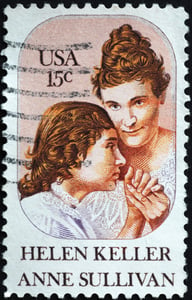A Brief Guide to Emanuel Swedenborg: Founder of the New Church
It’s no secret that many of us are struggling with this. The modern world is, in many ways, predicated on disconnection. Is there room for religion in a digital world?
The answer is yes, especially when that religion focuses so intently on the importance of our connection to one another, to God, to our world and our communities.
Those connections, and how we meet them, selfishly or selflessly, play a significant role in our place (and happiness) here and, according to Swedenborg, in the afterlife as well.
Though Swedenborg has had followers for hundreds of years and the New Church has existed for nearly as long, many people are just now coming to learn who Emanuel Swedenborg is and the profound impact he has had on not just members of Swedenborgian churches, but potentially all of us.
Quick Links
- Who is Emanuel Swedenborg?
- Spiritual Awakening and Theological Writings
- Core Theological Concepts
- Swedenborg’s Legacy
- Swedenborg’s Ongoing Influence
- Additional Swedenborgian Resources
Who is Emanuel Swedenborg?
Even as the son of a professor of theology, whose sermons and preaching earned the praise of the Swedish King in the early 1700s, Emanuel Swedenborg came, fully, to religion later in life. While his father’s beliefs had a significant influence on Swedenborg, that influence wouldn’t be fully explored until Swedenborg was, himself, in his 50s and after he had immersed himself in the sciences.
In fact, Swedenborg spent years studying and working in the natural sciences and engineering. This work eventually led him to question the connections between science and faith and wonder how mind, body, and spirit could all work together to elevate one’s faith and connection to God.
Where others saw a divide between science and faith, Swedenborg saw them as interrelated. It was his love of science that led to his early religious endeavors as he sought to find where matter (science) meets spirit (faith). Those reading his early writings would find work detailing the science of metallurgy as well as those exploring spirit.
So, what changed? What pushed Swedenborg from a life of science to one of faith? In his mid-50’s, Swedenborg began to experience a series of remarkably vivid dreams that culminated in a new phase in his life, one in which he regularly began having what we now would call spiritually transformative experiences.
These experiences called him to explore his faith, his connection to God, and how we, as individuals, experience both the physical and spiritual worlds.
More specifically, it’s suggested that Swedenborg experienced a kind of existential purgatory that forced him to reflect on his love for himself, indulgences in purely intellectual (worldly) curiosity and, instead, forced him to recognize the science of faith and a work toward a greater understanding of God.
Around the time he reached 60, Swedenborg all but retired from working in earth sciences and began a, verse by verse, spiritual interpretation of the Bible. He was a prolific writer, not just about interpretations of spiritual work, but about the importance of human spiritual experiences.
His later publishing took place predominantly in the Netherlands and Great Britain, introducing radical ideas for his day regarding how all religions can coexist, the responsibility of each individual to live a life devoted to God and his commandments, and the existence of angels among us.
These writings, and Swedenborg’s philosophies about the need for a new church based on theology organized around God’s love, would become the basis for the founding of the New Church.
Swedenborg’s Spiritual Awakening and Theological Writings
As briefly mentioned above, Swedenborg’s spiritual awakening and focus on the spiritual realm began, in earnest, when he began to experience vivid and powerful dreams, he believed was the divine communicating with him. For Swedenborg, this ushered in a significant change in belief, opening himself up to direct communication with angels, spirits, and even the divine realms. These revelations fueled a deep commitment to exploring the interconnectedness of the spiritual and physical realms.
In his writings, like "Heaven and Hell" and "Divine Love and Wisdom," Swedenborg shared his insights into the afterlife, the nature of God, and the spiritual significance of human existence. For the layperson, his journey might be likened to a sudden awakening or a shift in perspective, where the boundaries between the seen and the unseen blur.
It's as if Swedenborg discovered a hidden dimension that had been there all along, offering a fresh lens through which to view life, purpose, and the divine.
 Swedenborg’s Interaction with the Spiritual Realm
Swedenborg’s Interaction with the Spiritual Realm
Because Swedenborg’s encounters with the spiritual realm had such a profound impact on him, they became a primary focus for his extensive writings, most notably "Heaven and Hell" and "Secrets of Heaven." He asserted that his experiences allowed him to explore the divine order of the universe and understand the underlying spiritual principles governing existence. According to Swedenborg, the spiritual realm consists of distinct levels and planes, inhabited by various celestial beings and angels (we’ll get to that in a moment).
In fact, his insights into the afterlife and spiritual hierarchies are foundational to Swedenborgian churches, like NewChurch Live, which embrace his ideas on the interconnectedness of the physical and spiritual worlds, striving for a harmonious existence in both realms.
Core Swedenborg Theological Concepts
Because Swedenborg’s writings are so prolific, it would be difficult to cover them all here, but we’ll aim to cover some of the key concepts that create the foundation of Swedenborgian theology.
The Nature of God
For Swedenborgians, the primary concept of God is that God is love. While the Bible itself discusses this, Swedenborgian theology is “all in” on that belief.
More specifically, God created us out of love and so we are, literally, a physical manifestation of his love. In short, we are created and exist in love, almost like a bubble that surrounds us. Because of that love, God wants us to be happy and live a life that seeks to amplify that love through commitment and service to our relationships and communities. It also means finding our own individual purpose so that we may be happy.
And, perhaps most importantly, it means that even if (when?) we struggle, and perhaps veer from our path, which may mean we turn away from God, when we are ready to turn back to him, he will be there. As long as we are ready to receive his love, he is there waiting for us, without anger, or a need for retribution or vengeance.
Swedenborg on a God of Love and Wisdom
For many, these teachings run contrary to teachings of a vengeful God who sometimes seeks retribution for abandoning a spiritual life or what religion often identifies as “sin”. It’s not just this belief that differentiates Swedenborgian theology, but if we go back to his background in the sciences, Swedenborg’s concept of God elevates wisdom along with that all-encompassing love.
In fact, according to Swedenborg, wisdom and love are interconnected and essential aspects of the divine order. True wisdom, he asserted, comes from a deep understanding of spiritual truths and a sincere connection with God's love.
For example, in "Divine Love and Wisdom," Swedenborg explored the idea that love and wisdom were inseparable components of the divine, suggesting that a balance between the two creates harmony. For him, wisdom was not purely intellectual but also an opportunity to use that knowledge as a path to a life guided by love and compassion. In short, wisdom is not merely an academic pursuit, but essential to building and nurturing a loving and virtuous person.
The Marriage of Good and Truth (and Love and Wisdom and Service)
As God is love, and as he has created us in his image, Swedenborg saw the union of wisdom and love, faith and charity, as essential to a spiritual life. Much like other aspects of his teachings and theology, no single action stands alone and the choices we make, especially those that radiate love, reflect wisdom (which grows eternally, even in the afterlife).
As physical beings, we are designed to seek out the positive so that we may not just absorb the goodwill but also reflect it. This shows in the choices we make, the people we surround ourselves with, the commitment we reinforce, our actions and the services we provide, and extends beyond our physical life.
 The Afterlife and Spiritual Realms (Heaven and Hell)
The Afterlife and Spiritual Realms (Heaven and Hell)
For Swedenborg, living a loving life and being a loving creature extended beyond the physical world. According to Swedenborg, the afterlife exists as both a spiritual place and state of being. Who we are at our core, whether we are selfless or selfish, loving and compassionate or hateful and cruel helps to determine how we spend the afterlife and with whom we find ourselves.
In other words, in the afterlife, birds of a feather do flock together and that flock helps us continue to grow and transcend the levels of heaven or descend, in the case of hell. Our growth, our capacity for love, much like God’s, is therefore eternal. Those focusing their lives on love, service, and commitment to those values and more move through the spiritual realm and into heaven where they are among angels.
However, Swedenborg also taught that heaven and hell were states of being in as much as they relate to the afterlife. The state of one’s soul, embodying love or disavowing it, are akin to living in heaven and hell. In this way, Swedenborg believed in the interconnectedness between the natural world and spiritual realms.
The Link Between Spiritual and Physical Realms
This interconnectedness means that, as Swedenborg himself experienced, there is communication between these realms. It’s a core belief for Swedenborgians that beings from the spiritual realm can and do communicate with people in the physical world.
In his writings, Swedenborg delved into the intersection of the spiritual and earthly realms, particularly angels communicating with people. Swedenborg asserted that angels have the ability to convey divine messages to individuals on Earth. According to both "Heaven and Hell" and "Secrets of Heaven," he claimed to have experienced direct communication with angels, receiving insights into the nature of the afterlife and the spiritual dimensions.
Swedenborg proposed that angels communicate through symbolic and inner meanings, transcending ordinary language. He emphasized that these interactions are not just extraordinary spiritual experiences but everyday experiences as well. In other words, there is a constant, but subtle, connection between the spiritual and earthly realms.
This is among one of his most impactful teachings as it weaves throughout his other ideas as well, that there is an ongoing, beyond bodily existence, connection between our souls and God.
Swedenborg on Spiritual Rebirth
Because our spiritual experience is ongoing and transcendent, Swedenborg also emphasized the importance of spiritual rebirth. He believed that spiritual rebirth was a transformative process individuals undergo to attain a higher level of spiritual consciousness and connection with the divine.
According to Swedenborg, spiritual rebirth involves a profound inner change, where the individual's heart and mind are purified and aligned with divine principles. True spiritual rebirth, he stressed, is not simply the outward rituals but is a genuine inner transformation.
For Swedenborg, this process involves a conscious effort to shun selfish and worldly desires, replacing them with selfless love and compassion for others.
Swedenborg's understanding of spiritual rebirth also included the idea of awakening to a deeper understanding of spiritual truths. He claimed that individuals, through this process, gain insight into the spiritual realities that underlie the material world. This heightened awareness enables them to perceive divine truths and live in accordance with divine principles.
Additionally, Swedenborg said that spiritual rebirth is a continuous journey, not a one-time event. In the same way that God does not ever turn away from us, the possibility for spiritual rebirth always exists.
In other words, individuals always have the opportunity for ongoing growth and development, advancing in their spiritual understanding and connection with the divine throughout their lives.
 Swedenborg on Scripture
Swedenborg on Scripture
First and foremost, Swedenborg focused heavily upon the symbolic meaning of scripture rather than looking for literal interpretations. Capturing the essence of Biblical stories could reveal more about God’s plan, intentions, and wants for us.
That said, Swedenborg affirmed the full divinity of Jesus Christ as the one God in human form who came to save humanity. However, when it comes to the concept of the Holy Trinity, rather than seeing that as three separate but essential components of one Divine Person, Swedenborg believed the Trinity was actually the one God’s soul, body, and activity.
When we consider the purpose of the Trinity, to create a being that represents spirit, soul, and body (which can act on the needs and wants of the spirit and soul), this translation begins to take shape. We, as spiritual beings, inhabit physical bodies, capable of acting on our beliefs and values (love, wisdom, gratitude, patience, kindness) and this is the basis for the role of commitment in a spiritual life.
And, the goal, moving forward, based on these principles, is to nurture and grow a new era of Christianity- The New Jerusalem. This new vision of Christianity was based on love, wisdom, interconnectedness of spiritual and physical realms, and equal access to the spiritual truth for all who seek it.
Swedenborg’s Legacy
Beyond his prolific writings, exploring the intersection of the spiritual and physical realms, went on to inspire countless individuals and movements. However, Swedenborg's legacy is most evident in the establishment of the Swedenborgian Church and the impact on various Christian denominations.
Swedenborgian Churches and Organizations
Obviously, one of the most significant impacts is the proliferation of Swedenborgian churches.
The Swedenborgian Church of North America, established in the mid-19th century, is the focal point for Swedenborgian congregations and individuals across the United States and Canada.
Swedenborgian churches emphasize an inclusive and open-minded approach to spirituality, encouraging members to explore their own spiritual journeys, to join the church community at any point in that journey and actively engage with the teachings of Swedenborg. The church celebrates the unity of all faiths and aims to nurture and foster a sense of community, tolerance, and love.
Many Swedenborgian churches use the term "New Church” which relates directly to the New Jerusalem referred to in the Bible and, as Swedenborg espoused, would be reached when we refocused Christianity on love, charity, spiritual growth, and greater understanding through a relationship with the divine.
 Swedenborg’s Ongoing Influence
Swedenborg’s Ongoing Influence
Swedenborg’s insights into the afterlife and the nature of God left an indelible mark on all facets of not just the religious and spiritual world but also on literature, influencing writers and philosophers including Balzac, Baudelaire, Dostoevsky, Goethe, Jung and writers of the Romantic period including William Blake and Ralph Waldo Emerson.
Still, Swedenborg’s influence even transcended these other prolific writers and thinkers, influencing cultural icons like Johnny Appleseed and Helen Keller. In fact, Keller would become a congregant and credits Swedenborgian theology as a way to move beyond physical limitations. New Church teachings allowed her to find a life of love and light and, eventually, follow those beliefs into a life of action and service. Her book, My Religion, discusses this journey.
Similarly, Swedenborg's ideas transcend traditional religious boundaries and both New Age and esoteric circles, where holistic perspectives on the interconnectedness of the spiritual and material worlds resonate. In short, because of the visionary nature of Swedenborg’s work, coupled with his focus on community, love, and connection, there is and will be an enduring appeal to his work and theology.
Additional Resources About Swedenborg
Given his influence, it should come as no surprise that there are substantial works about Swedenborg and his writing and theology. This is in no way an attempt to create an exhaustive list, but instead, we present some of the more popular, informative, or useful texts regarding his work, beliefs, and the Swedenborgian “New Church”.
Books by Swedenborg
As noted, Swedenborg was quite prolific, not just as a theologian but also as an Emanuel scientist, philosopher, and mystic. In particular, these texts are among Swedenborg's most influential writings:
- Secrets of Heaven (1749-1756) - This is Swedenborg's major theological work, consisting of a multi-volume exploration of the spiritual meaning of the Bible. It delves into the hidden, symbolic meanings behind the stories and teachings found in the Old and New Testaments.
- The Apocalypse Revealed (1766) - In this work, Swedenborg provides an interpretation of the Book of Revelation, offering insights into its symbolic and spiritual significance. He claimed to have had direct visions and communication with the spiritual world, influencing his interpretation of apocalyptic imagery.
- Heaven and Hell (1758) - This book explores Swedenborg's visions and experiences of the afterlife, describing the nature of heaven, hell, and the intermediate states. It discusses the spiritual realms and the journey of the soul after death.
- Divine Love and Wisdom (1763) - In this philosophical work, Swedenborg explores the nature of God's love and wisdom. He discusses the relationship between divine principles and the created universe, aiming to reconcile theology with rational philosophy.
- The New Jerusalem and Its Heavenly Doctrine (1758) - This work focuses on the nature of the New Jerusalem as a symbol of a new spiritual era. It outlines principles for leading a good and spiritual life, emphasizing the importance of love and charity.
- True Christian Religion (1771) - In this comprehensive theological treatise, Swedenborg presents his views on Christianity, salvation, and the future of the church. It covers a wide range of theological topics, including the nature of God, the Trinity, and the purpose of human existence.
- Conjugial Love (1768) - This work explores the concept of spiritual and eternal marriage, discussing the nature of conjugal love and its role in the afterlife.
- Regeneration and Spiritual Growth - While not a specific book, Swedenborg's writings collectively address the process of spiritual growth and regeneration. He outlines steps individuals can take to align themselves with divine principles and undergo a transformative spiritual journey.
These writings have had a lasting impact on various religious and philosophical movements, inspiring thinkers and seekers across different traditions.
Books About Swedenborg
Similarly, given his influence, quite a bit has been written about Swedenborg. Among the most notable of those books:
- The Swedenborg Epic: The Life and Works of Emanuel Swedenborg by Cyriel Odhner Sigstedt - A comprehensive biography that provides an overview of Swedenborg's life, his scientific contributions, and his spiritual experiences.
- Swedenborg: An Introduction to His Life and Ideas by Gary Lachman - Lachman's book offers a concise yet informative introduction to Swedenborg's life, his spiritual journey, and the impact of his ideas on various fields.
- Swedenborg: Introducing the Mystic by Wilson Van Dusen - This book explores Swedenborg's mysticism and his experiences of direct communication with the spiritual world.
- Emanuel Swedenborg: Scientist and Mystic by Signe Toksvig - Toksvig's work delves into Swedenborg's dual identity as both a scientist and a mystic, examining the intersections of these aspects in his life.
- Swedenborg's Garden of Theology: An Introduction to Emanuel Swedenborg's Published Theological Works by Jonathan S. Rose - A guide to Swedenborg's theological writings, providing insights into his religious doctrines and their evolution.
- Swedenborg: Buddha of the North by G. Trobridge - This book draws parallels between Swedenborg's spiritual insights and Eastern religious traditions, exploring the mystic's universal themes.
- The Essential Swedenborg edited by Sig Synnestvedt - A compilation of selected writings by Swedenborg, offering a condensed overview of his key philosophical and theological ideas.
- Emanuel Swedenborg: Visionary Savant in the Age of Reason by Ernst Benz - This scholarly work examines Swedenborg's life and contributions within the historical and intellectual context of the Enlightenment.
These books help to provide a comprehensive understanding of Emanuel Swedenborg's life, teachings, as well as his impact on philosophy, theology, and mysticism.
Online Resources and Websites about Swedenborg
As an online church, we understand how access to online information can open up worlds, especially when it comes to exploring one’s spiritual journey. We’d be remiss if we didn’t include these other websites where you can find additional information about Swedenborg:
- Swedenborg Foundation - The official website of the Swedenborg Foundation may contain information about Emanuel Swedenborg's life, works, and teachings.
- New Church - There are various websites related to the New Church including ours, NewChurch Live.
- Swedenborg Digital Library - Look for digital libraries dedicated to Swedenborg's writings and publications.
- Off the Left Eye - Off The Left Eye, a YouTube channel, explores Swedenborgian faith and spirituality in often in-depth videos and discussions.
In addition to these resources, there are online videos, forums and communities, like the ones hosted by NewChurch Live that can help you get connected with a church community, regardless of where you are in your spiritual journey. We encourage you to reach out and get connected with us.